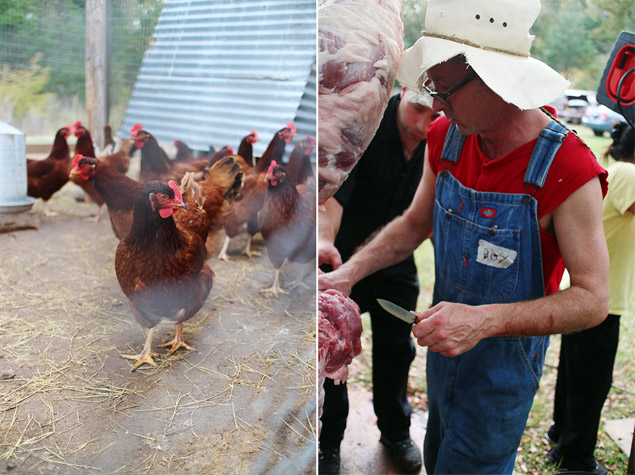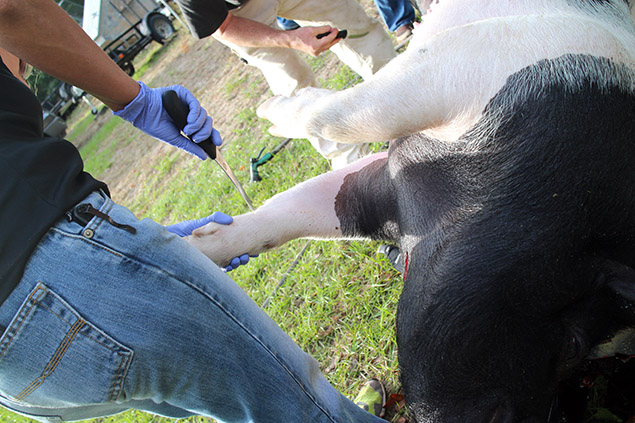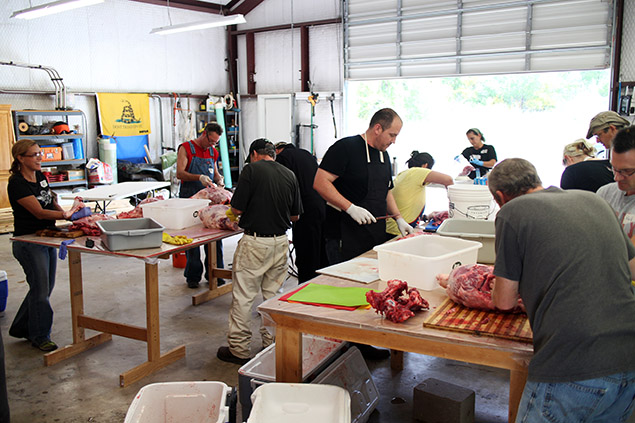
Life is all about eating meat, stealing kisses, and keeping your body well-moisturized. Well, it’s really more about being happy and staying alive. But you feel me. These days, it seems like everyone is getting more interested in being closer to their food. Whether it’s knowing where your chicken eggs were raised, visiting the farmers market to meet the man who ripened your peppers, growing an herb garden on your balcony, or just vising a local brewery to see where that tall glass of happiness came from—people are curious about the origins of their food. It’s a wonderful progression on everyone’s part to demand that the food we eat every day actually comes from someone that cares about the quality and proper handling of the food they provide. This transparency not only protects our bellies, but also protects the beloved animals that give so much for our daily intake. I’ve eaten meat all my life, and as I get older, I’ve started to wonder about the process involved to get it to my plate. It’s not that I imagine the meat comes from a magical box in the back of the grocery store and no animals get harmed along the way, but there is a lot involved beyond that brightly lit butcher counter.
So I decided to get closer to the meat. This weekend, I attended a class lead by Wildlife Biologist Greg Pleasant who works for Texas Parks and Recreation. Greg harvests all of his own meat on his property in Giddings, TX, and he offers students a day-long class to field dress, skin, quarter, and package a pig. It’s not only a tremendous experience, though somewhat grueling in the “getting-used-to-blood-and-guts” part, but it’s also an excellent way to gain first-hand understanding of what it takes to get those delicious tenderloin cuts from dirt to plate. He purchases enough pigs to outfit the number of attending students with plenty of freshly butchered meat to take home. The pigs are organically raised on farms just down the road from Greg’s place, and every step of the process is treated with care and safety.

When I first arrived, I must say that my heart sank a bit at the thought of seeing a pig die and then being forced to cut it up so I could eat it. This seems somewhat ridiculous, since every time I bite into a piece of meat at home or in a restaurant, I am essentially responsible for that animal’s death… just from a comfortable distance. The idea of grocery stores must seem asinine to many less-commercialized cultures, as well as our ancestors. Seeing the animal alive that morning and moving about through its life was concerning at first, but those feelings quickly turned into an objective sense of duty as it became immediately imperative that we work efficiently to ensure that nothing got wasted. Processing the animal along with a team of people became an act of communal bonding. It felt as though something nostalgic and visceral came to life and felt completely natural in the effort to respectfully harvest the animal’s resources with reverence and focus.

After everything was sectioned and cut away, we moved the meat into the shop and began learning how to cut and clean it. We took great pride in properly cutting along the muscles and removing excess fat. It became meditative. We worked at stations preparing cuts and then delivering them to the packaging table where everyone had their coolers for their requested portions. As a city meat-eater, this was a revelatory experience. For us in the concrete habitat, it’s not exactly acceptable to go about hunting down neighborhood squirrels or rabbits, so a class like this offers the opportunity to understand what it takes to be a responsible meat-eater. I don’t imagine I will be processing all of my meat on my own from this day on, but I am grateful for the understanding and knowledge of this ancient and self-sustaining practice and will continue to approach meat-eating with consideration and thoughtfulness.
The class is available through The Human Path. It’s a bit of a hike to attend, but well worth it in the end. I now have 20 pounds of humanely raised and harvested pork. Now I know what it takes to get pork to my dinner table. Also, if anyone has a great recipe for curing bacon, bring it on, please.




